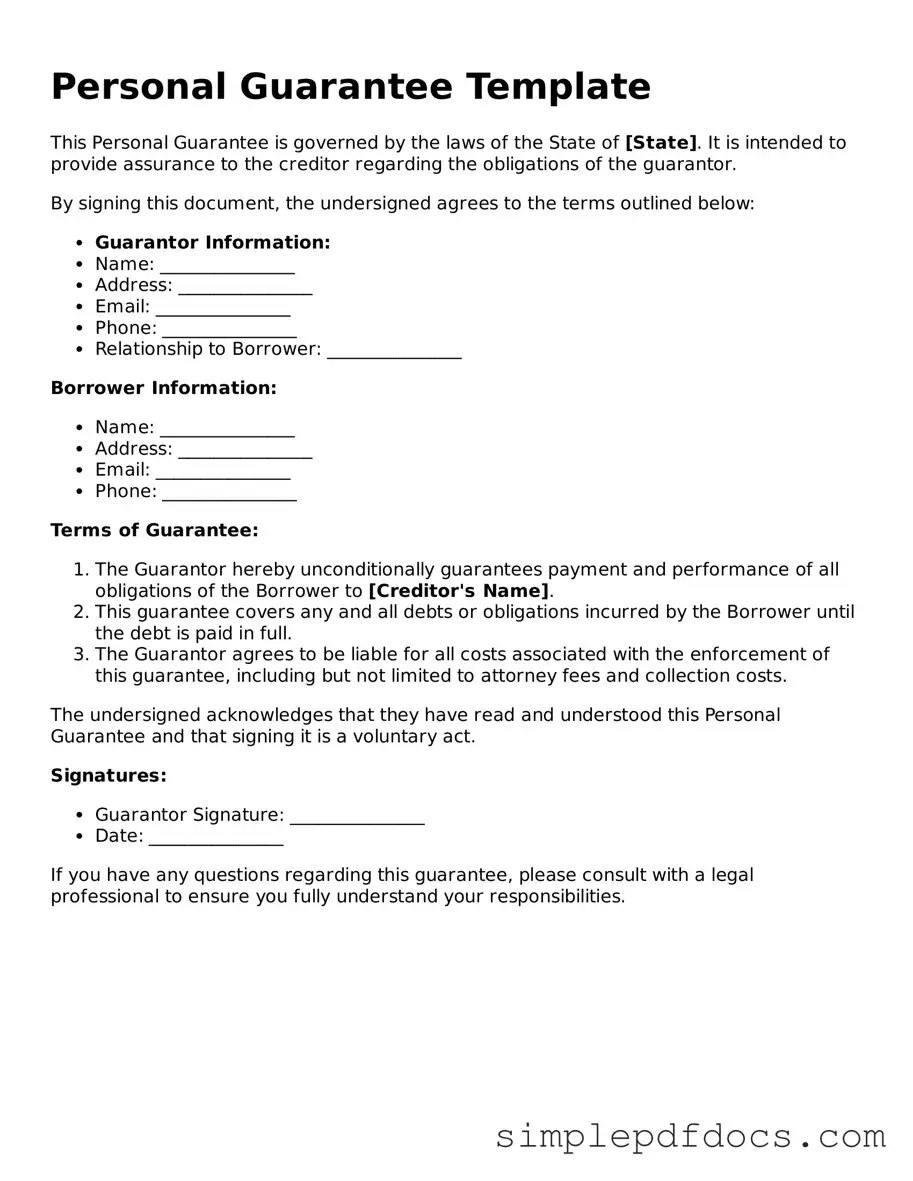The Personal Guarantee form serves as a critical document in various financial and business transactions, establishing a commitment from an individual to assume responsibility for a debt or obligation incurred by a business or another party. This form typically includes essential details such as the names of the guarantor and the debtor, the nature of the obligation, and the terms under which the guarantee is valid. By signing this form, the guarantor agrees to cover the debt if the primary borrower defaults, which can provide lenders with an additional layer of security. It is important to note that a Personal Guarantee can be either unlimited or limited, depending on the specific terms outlined in the agreement. Furthermore, understanding the implications of signing such a document is crucial, as it can significantly affect the guarantor's financial standing and creditworthiness. Overall, the Personal Guarantee form plays a pivotal role in fostering trust between lenders and borrowers, ensuring that obligations are met and financial relationships are maintained.
